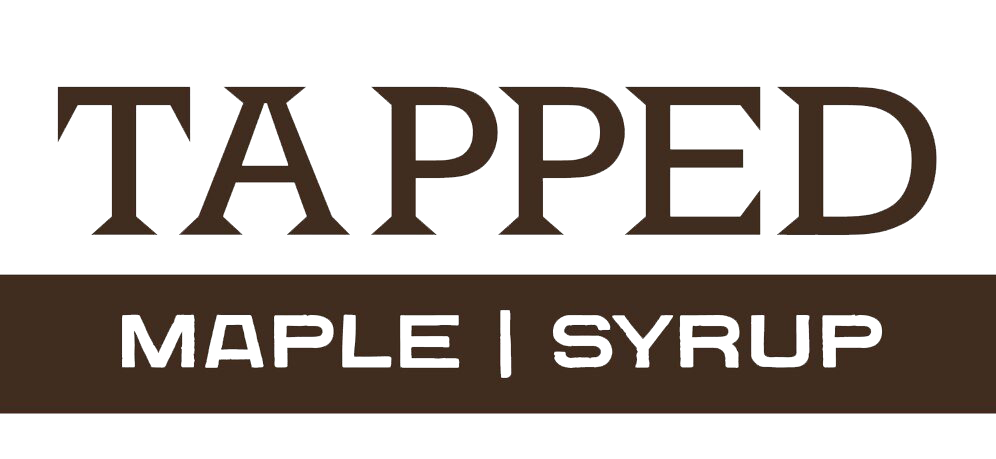The Sacred Sugarbush
“There are no unsacred places, there are only sacred places and desecrated places.” - Wendell Berry
As part of Taps + Tapping I recently led two tours of our farm and sugarbush. I didn’t plan to share this quote by Wendell, but it came to mind while on the first tour. It gets to the heart of how I feel about our farm.
If you were standing at the location of our farm 10,000 years ago, you’d be standing at the base of a massive river of ice now named the Langlade Lobe of the Wisconsin Glacier. The glacier would be towering above you, nearly a mile thick. Rushing past you would be rock, sand, and silt-laden meltwater running out into an outwash plain of shallow lakes and wetlands.
Once the glacier completely melted, it left behind a hilly moraine of rock and gravel. The legacy of the glaciation is forests and water. The hilly moraine isn’t conducive for farming, so it’s remained forested, and forests are excellent at letting rain and snowmelt percolate into the soil and ultimately the groundwater. That groundwater seeps out into the outwash plain just a few feet from the surface and sometimes emerging as springs. We are blessed with abundant and clean water here.
When my great grandparents arrived here in November of 1916 (what a terrible time of year to arrive in Northern Wisconsin), they found a cutover and burned-over land full of stumps, the result of lumber companies stripping the land of valuable timber and then fires raging through the leftover slash piles. Fortunately, a small parcel of land still had trees on it. This parcel would become our sugarbush. We don’t know the exact start date, but at some point they began tapping the trees to make maple syrup. This was followed by my grandparents making maple syrup there, and then my dad and uncle. It’s here that I grew up making maple syrup, and now our kids have grown up making syrup as the 5th generation of our family on this land.
My great grandparents weren’t the first to tap the trees in this area though. For thousands of years, Menominee and Ojibwe people made maple sugar on these lands (we can’t say for sure if it was specifically on this parcel of land, but definitely in this area among trees once contiguous with this forest). The process that we use to this day came from Native Americans. The technology may be different, but the process is the same.
When I approach the edge of the sugarbush, which we call The Maples, I am intentional about stopping for at least a moment to recognize this history which has created the conditions, knowledge, and skills for us to be able to make maple syrup to this day. And, I take time to recognize that it’s the trees and the forest that allow us to continue to make syrup. Without the trees producing sugar through photosynthesis and sharing their sap with us, there is no maple syrup. History and ecology come together for us to be here making maple syrup. And, it’s our responsibility to care for this forest the best that we can in appreciation for what it provides for us.
The oldest tree in our sugarbush we call Grandpa Tree (it could just as appropriately be called Grandma Tree as maples are both male and female). I estimate this tree to be 200-250 years old, likely one of the trees tapped by my great grandpa. I always visit this tree when in the sugarbush, checking in to see how it’s doing. Alongside Grandpa Tree are tiny maple seedlings, maybe just a year old. In the surrounding forest, there are trees of every age in between, and not just maple, but also hemlock, yellow birch, basswood, spruce, white cedar, black ash, aspen, red oak, and black cherry.
The one feature of this forest that I always find fascinating to think about is that we’re seeing is just a tiny fraction of what’s going on here. Most of the action is underground and unseen. The trees in the sugarbush are interconnected via their roots and fungal hyphae (the main “body” of fungus - mushrooms are the “fruit” of fungus). Through this network, trees exchange information, food, and water, sharing some of their sugar with the fungus in trade for the fungi’s networking and ability to access minerals and nutrients. This network also allows those tiny maple seedlings to survive. Since they exist on the forest floor often in complete shade, they don’t get enough sunlight to make their own food. The seedlings depend upon the mature trees to feed them through the fungal connections. In this way, maple seedlings can hang out in the forest floor for decades waiting for an older tree to die or get blown over, creating a gap in the canopy, and sunlight to reach its leaves allowing it to produce sugar and to grow. So, the seedlings we find next to Grandpa Tree may be just a year old, but they may also be 40 or 50 years old. Our maple syrup production isn’t just dependent on the maple trees, but the whole community and ecology of the forest.
The purpose of our company Tapped is to be able to generate revenue so that we can continue to care for this land into the future. A related goal is to use maple syrup as a pathway to connect other people to the sugarbush and to help them understand and experience the sacredness of this land, and by extension, other lands. Only through recognizing this sacredness can we hope to protect places and to restore lands that have been desecrated.
